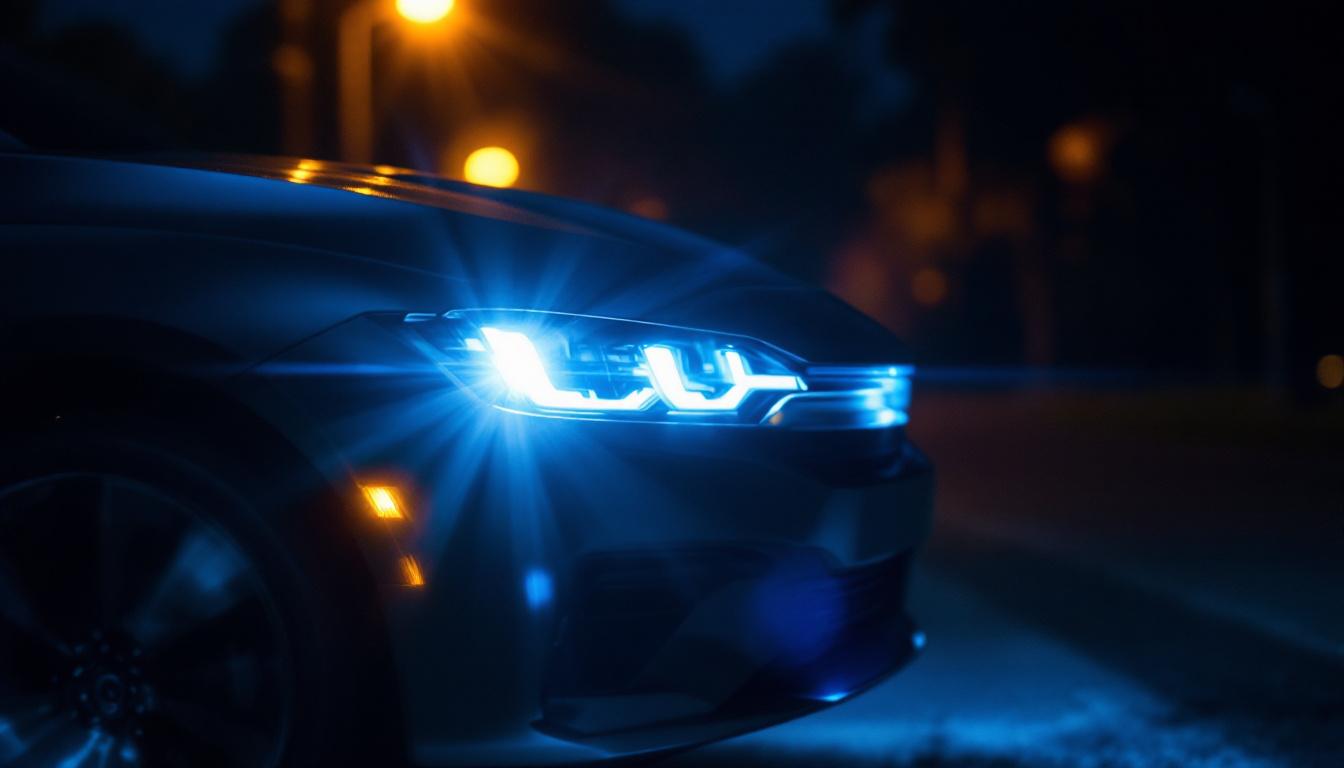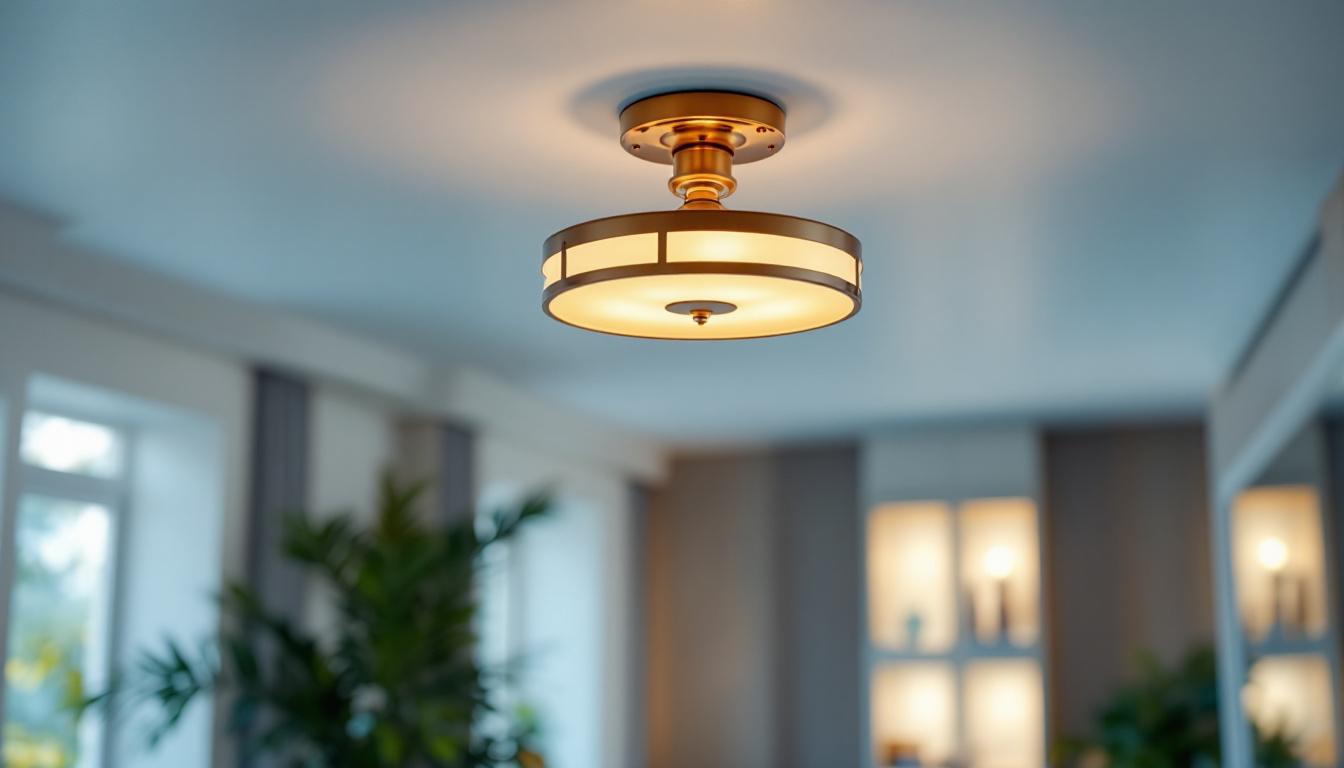
High-Intensity Discharge (HID) lights are a category of electrical gas-discharge lamps that produce light by creating an electric arc between tungsten electrodes housed inside a translucent or transparent fused quartz or alumina arc tube. Unlike traditional incandescent bulbs, which generate light through a heated filament, HID lamps rely on an arc discharge through a gas mixture, resulting in significantly higher luminous efficacy and longer lifespan.
The core principle behind HID lighting involves ionizing a gas—commonly xenon, mercury vapor, or metal halides—inside the lamp. When the electric current passes through, it excites the gas atoms, causing them to emit intense light. This process is highly efficient, producing more lumens per watt compared to conventional lighting technologies.
For lighting contractors, understanding the fundamental operation of HID lights is crucial, as it informs decisions about application suitability, installation requirements, and maintenance protocols.
HID lights are widely used in various applications, including street lighting, automotive headlights, and industrial lighting, due to their ability to provide bright illumination over large areas. For instance, in street lighting, HID lamps can enhance visibility and safety for drivers and pedestrians alike, making them a popular choice for urban environments. Additionally, the color temperature of HID lights can vary, with options ranging from warm white to cool blue, allowing for customization based on specific needs and aesthetic preferences.
Moreover, the advancements in HID technology have led to the development of more energy-efficient and environmentally friendly options, such as the introduction of electronic ballasts that improve performance and reduce energy consumption. These innovations not only help in lowering operational costs but also contribute to sustainability efforts by minimizing the carbon footprint associated with lighting. As a result, HID lights continue to evolve, maintaining their relevance in an ever-changing landscape of lighting solutions.
Mercury vapor lamps were among the earliest HID lamps developed and are known for their bluish-white light output. They have been widely used for street lighting, industrial facilities, and large indoor spaces. However, due to their lower color rendering index (CRI) and environmental concerns related to mercury content, their usage has declined in favor of more advanced HID types. Despite this, they still find niche applications in specific settings, such as in certain types of industrial processes where the unique spectral output can be beneficial. Additionally, the longevity of mercury vapor lamps, often exceeding 24,000 hours, can make them a cost-effective option in situations where frequent lamp replacement is impractical.
Metal halide lamps are a popular choice due to their high luminous efficacy and excellent color rendering capabilities. They emit a bright white light that closely resembles natural daylight, making them ideal for commercial, retail, sports, and architectural lighting. Their versatility and efficiency have made them a staple in many modern lighting solutions. Moreover, advancements in metal halide technology have led to the development of ceramic metal halide lamps, which offer even better color consistency and improved energy efficiency. These lamps are particularly favored in applications where accurate color representation is crucial, such as in art galleries and photography studios, where the true colors of objects must be faithfully illuminated.
High-pressure sodium (HPS) lamps produce a warm yellow-orange light and are known for exceptional energy efficiency and long service life. They are commonly used in street lighting, parking lots, and industrial environments where color rendering is less critical. Their ability to penetrate fog and rain makes them valuable in outdoor applications. Furthermore, HPS lamps are often favored for their low operating costs, which can lead to significant savings over time, especially in large-scale installations. As cities look to reduce energy consumption and improve public safety, HPS lamps continue to be a reliable choice for illuminating roadways and public spaces, despite the growing interest in LED alternatives.
Each HID lamp type offers distinct advantages and limitations. Lighting contractors must evaluate factors such as color temperature, CRI, energy consumption, and environmental impact when selecting the appropriate HID lamp for a project. This ensures optimal performance, compliance with regulations, and client satisfaction. In addition to these considerations, the specific application environment plays a critical role in the decision-making process. For instance, in areas with high humidity or extreme temperatures, certain HID lamps may perform better than others. Furthermore, understanding the lifecycle and disposal requirements of each lamp type is essential for sustainable practices, especially given the regulatory landscape surrounding hazardous materials like mercury. As the lighting industry evolves, staying informed about the latest technologies and trends can help professionals make informed choices that align with both performance and environmental stewardship.
HID lighting continues to play a significant role in modern lighting solutions due to several inherent advantages. One of the primary benefits is their high luminous efficacy, which translates to more light output per unit of energy consumed compared to traditional incandescent or fluorescent lamps. This efficiency contributes to reduced operational costs and lower environmental impact, making HID lighting a preferred choice for eco-conscious projects.
Another advantage is the long lifespan of HID lamps, often ranging from 10,000 to 24,000 hours depending on the type and usage conditions. This durability reduces the frequency of replacements, minimizing maintenance efforts and downtime—an important consideration for large-scale or hard-to-access installations. In addition, the extended lifespan of HID lamps means that fewer materials are consumed over time, further enhancing their sustainability profile.
HID lamps also offer superior light quality in terms of brightness and color rendering, enhancing visibility and safety in applications such as roadways, sports arenas, and industrial facilities. Their ability to produce intense, focused illumination makes them suitable for high-bay lighting and outdoor floodlighting. Furthermore, the crisp, bright light emitted by HID fixtures can significantly improve the aesthetic appeal of outdoor spaces, making them more inviting and functional for nighttime activities.
Moreover, HID lighting systems can be easily integrated with advanced control technologies, such as dimming and motion sensors, which further optimize energy usage. This adaptability allows for tailored lighting solutions that meet specific needs, whether it’s enhancing security in a parking lot or providing the right ambiance for an outdoor event. As cities and businesses increasingly adopt smart lighting solutions, the role of HID lighting in creating efficient, responsive environments becomes even more pronounced, paving the way for a future where energy consumption is minimized without sacrificing quality or safety.
One notable challenge with HID lamps is their warm-up period. Unlike LED or incandescent bulbs that reach full brightness almost instantly, HID lamps require several minutes to stabilize and achieve full luminous output. This characteristic can be a limitation in applications demanding immediate illumination.
Additionally, HID lamps cannot be restarted immediately after being turned off; they need a cooling period before restriking the arc. This restriction necessitates careful control system design, especially in environments where frequent on/off cycling occurs.
Due to the presence of hazardous materials such as mercury in some HID lamps, proper disposal and recycling are critical to comply with environmental regulations. Lighting contractors must be aware of local and national guidelines to ensure responsible handling of spent lamps.
Moreover, increasing energy efficiency standards and the rise of alternative technologies like LEDs have led to stricter regulations on HID lamp usage in certain applications, influencing project planning and product selection.
HID lamps require specialized ballasts to regulate the electrical current and provide the necessary voltage for ignition and operation. The ballast type and quality significantly affect lamp performance, efficiency, and lifespan. Lighting contractors must ensure compatibility between ballasts and lamps and consider ballast efficiency and power factor during system design.
While LED technology has gained prominence due to its superior energy efficiency and instant-on capabilities, HID lighting remains relevant in specific contexts. For example, in large-scale outdoor applications and certain industrial environments, HID lamps continue to offer cost-effective and reliable illumination solutions.
Furthermore, advancements in HID technology, such as improved ballast designs and the development of mercury-free lamps, contribute to reducing environmental impact and enhancing performance. Lighting contractors can leverage these improvements to meet sustainability goals while addressing client requirements.
In many retrofit projects, HID lighting serves as a transitional solution, balancing upfront costs and performance benefits before full LED conversion becomes feasible. Understanding the role of HID in this evolving landscape enables contractors to provide informed recommendations and tailored lighting strategies.
Proper installation is critical to maximizing the benefits of HID lighting. Contractors should follow manufacturer guidelines for ballast wiring, lamp handling, and fixture mounting to ensure safety and optimal operation. Attention to ventilation and heat dissipation is also important, as excessive heat can shorten lamp life.
Regular maintenance, including cleaning fixtures, inspecting ballasts, and timely lamp replacement, helps maintain light quality and system reliability. Monitoring lamp lumen depreciation and color shift over time allows for proactive management and improved client satisfaction.
Additionally, integrating HID lighting with modern control systems, such as dimmers and occupancy sensors, can enhance energy savings and operational flexibility. Lighting contractors should consider these options during system design to deliver comprehensive solutions.
High-Intensity Discharge lighting, with its diverse lamp types and proven performance, remains a vital component in many modern lighting solutions. For lighting contractors, a thorough understanding of HID technology, its advantages, limitations, and evolving role in sustainable lighting is essential for delivering effective and efficient projects.
By carefully selecting appropriate HID lamps, ensuring proper installation and maintenance, and staying informed about regulatory trends, contractors can optimize lighting outcomes for a wide range of applications. Although emerging technologies continue to reshape the lighting industry, HID lighting’s unique characteristics ensure it will remain relevant for the foreseeable future.
Ready to enhance your lighting solutions with high-quality HID lights? At LumenWholesale, we provide lighting contractors with an exceptional range of spec-grade HID lamps and accessories at unbeatable wholesale prices. Say goodbye to inflated markups and hello to premium lighting that meets the highest industry standards. With our hassle-free bulk buying and free shipping, you can trust that you’re getting the best value for your investment. Elevate your lighting projects by choosing LumenWholesale, where quality, affordability, and convenience come together seamlessly. Discover our extensive selection and take the first step towards brighter, more efficient lighting solutions by visiting Wholesale Lighting at the Best Value today.

Discover expert strategies and tips for lighting contractors to excel in installing flood outdoor lights.

Discover the ultimate guide to ceiling fan sizes tailored for lighting contractors.

Discover how semi flush ceiling light fixtures can transform your space with enhanced lighting solutions.

Discover the essential guide for lighting contractors on wall sconces, exploring design trends, installation tips, and energy-efficient solutions to enhance any space..